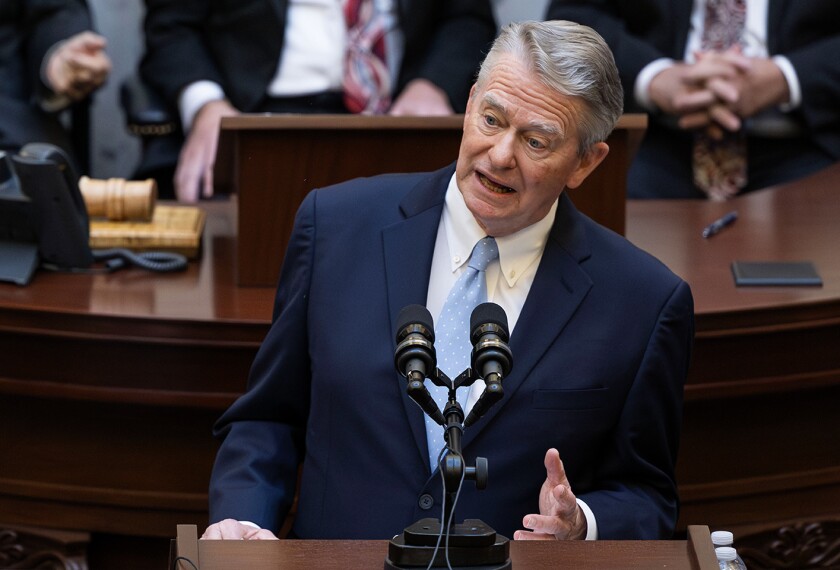K-12 school spending this year got caught up in budget standoffs that, in some states, led to brief government shutdowns. And the drama isn’t over yet.
Though most state legislatures now have wrapped up business for the year, several this summer still are trying to design new revenue models, K-12 funding formulas, and—in the case of Kansas and Washington—awaiting court approval to assure their new school spending plans are constitutional.
Meanwhile, the fiscal pressures continue. Unlike the economy at large, state revenue, for a variety of reasons, has not fully recovered from the recession. More people are shopping online, which has especially hurt state sales-tax receipts, and while the national unemployment rate is at historic lows, workers’ income has not rebounded as strongly as after previous recessions.
Because of decreased sales and income tax receipts, the vast majority of states missed revenue projections for the fiscal year that ended June 30. Legislators over the past few months have been enmeshed in hostile debates over how to distribute shrinking pots of money to their schools.
A few states, including Georgia, Idaho, and Tennessee, ultimately added more money to their K-12 budgets this year, to provide for bumps in teacher salaries or reduced class sizes. But others, such as Alaska, Connecticut, and Oklahoma, hacked away at their school budgets.
Going to the Brink
Several states took their funding battles to the brink—and, in a couple of cases, beyond.

Illinois Gov. Bruce Rauner, a Republican, vetoed a $36 billion spending plan July 4 that proposed to put an additional $350 million in the state’s public school coffers. But the state’s Democratically-controlled House of Representatives overrode that veto, sparing a state shutdown that would’ve prevented the schools from opening this fall and the state’s credit rating being downgraded to junk status.
But Rauner had yet to sign S.B. 1—which went to the governor’s desk in May—to overhaul the Illinois K-12 funding formula so that the state picks up more of public schools’ costs
And in Maine, Gov. Paul LePage, also a Republican, signed a $7.1 billion budget July 4 that increases education funding by $162 million and adds $1.15 million in state money to the federal Head Start preschool program. That ended a three-day government shutdown. Last fall, Maine residents voted to increase taxes on those making $200,000 or more to increase school spending, a proposal LePage said was “illegal” since the state’s legislature, not the voters, has taxing authority. He vowed to ramp up his push for more accountability on school spending.
“We emptied the war chest on everything else in the state to take care of education and we are getting a subpar system,” LePage said, according to the Portland Press Herald. “And now we got some reforms, you just watch me go the next year. There is going to be some hell to pay in education.”
New Jersey’s government shutdown lasted three days before GOP Gov. Chris Christie and the state legislature agreed July 4 on a budget that provides schools with $181 million more in funding. Christie this past year unsuccessfully pushed to upend that state’s long-standing funding formula.
Unfinished Business
At least 11 states are in the process of overhauling their school funding formulas, an unusually high number, according to the National Conference of State Legislatures.
In Texas, the legislature is in a special session through Aug. 18 to consider, among other measures, whether to adopt a new funding formula. The state’s supreme court said last year that it was not in its purview to judge the effectiveness of the state’s school spending plan. A formula proposed during this year’s session that would’ve provided poor districts with more money and allowed wealthy districts to spend more of their locally generated tax revenue failed.
Delaware, Idaho, and Maryland, meanwhile, all have set up commissions to study ways to replace their school funding formulas.
Court Battles
And new funding formulas created after long-running legal battles over school funding in two other states await final sign off from the courts.

In Washington, legislators decided July 1 to increase school spending by $7.3 billion over the next four years. The state supreme court is expected to decide in the coming weeks whether the boost in spending adequately satisfies a 2012 ruling that said districts shouldered way too much of school costs. The state has since expanded pre-K access and all-day kindergarten but had a difficult time figuring out how to raise teacher salaries so that the minimum starting salary for teachers is $40,000.
Kansas’ supreme court was expected to hear arguments July 18 on the constitutionality of the legislature’s new school formula, passed just weeks before the end of its session. The new funding formula provides $285 million more over the next two years, far short of what plaintiffs in the long-standing Gannon v. Kansas decision say is necessary. If the high court deems the new funding formula unconstitutional, the legislature risks the justices shutting down the school system until lawmakers come up with another plan.






